Local Government Improvement
We run our regular fortnightly Success Labs sessions for our users (sign up here). In a recent customer survey, the feedback we are getting most is that customers want to hear other customer stories. I was delighted to be sent a link to this excellent podcast with Paul Shepherd, Founder and CEO of We Build Bots, with Kay O’Flaherty, Head of Service for Digital at Wrexham County Borough Council. Kay describes her role in Wrexham as “Continuously improving services using data and business intelligence and changing the culture of the organisation”. Kay has worked with us and the Engage Process software at both her current role and also in her previous role at Teignbridge Council.
Kay has great experience delivering change and service improvement in the Local Government currently but has also worked in the private sector and brings some of that thinking to her current work. It really is an interesting podcast, so do give it a listen, but I wanted to pull out some highlights and potentially add some of our thoughts to the mix.
What does an average day look like?
An average day is a mix of the formal, for example, programme boards and meetings with senior leadership but also being heavily involved in the operational user redesign workshops. Pulling on her previous private sector roles, Kay also spends a good deal of her time selling digital and their approach to digital transformation to services. Services are really busy, and they do need to dedicate time and resources to transformation, so they do need to be sold on the culture and approach and, most of all, the benefits.
From our perspective, there have been many projects in the past that we have seen promising transformation and maybe not delivering on some of those promises. That is always a hurdle you have to get over with stakeholders. Being able to sell the benefits and the fact they are identified and quantified really helps services make decisions based on facts and data. Service Managers love the fact you can map their processes and analyse them easily and quickly. Selling these benefits is critical to success. If you are interested in understanding more about how much selling is involved in so many of our roles and how you can do it better, look at Dan Pinks book “To Sell Is Human” or look at this video.
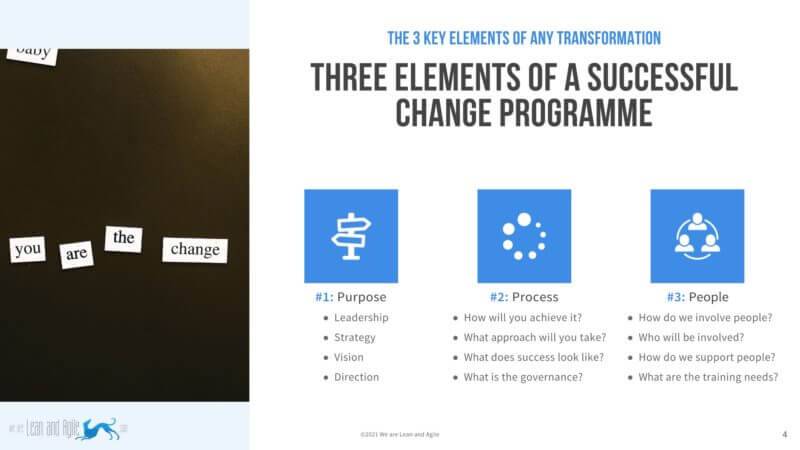
We have split up the lessons shared by Kay into the 3 main subject areas:
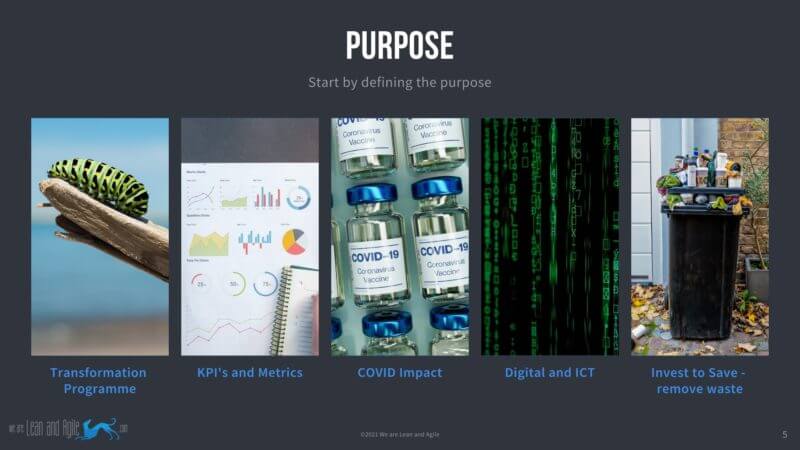
Purpose
Wrexham’s Transformation Programme
Something common across most Councils and Wrexham is no different is that they have a large transformation programme. It ranges from internal processes, for example, Finance and HR looking to improve those often clunky internal processes. These may be internal processes but do have a direct effect on other customer-facing processes too.
Then there is the more external-facing work like Digital, Smart City, Remote/Homeworking and a big focus on data. The data element is quite linked to improvement in the sense that they are looking to be able to pull data together and turn it into intelligence. Better data to inform better decisions and, therefore, better outcomes.
Another thing Kay picked upon, which I see as critical, is the need to scan the horizon. Be aware of what is going on right now and what others are doing. Local Government is a great place to work in improvement as generally everyone is willing to share and collaborate. Learn from others and avoid pitfalls. It is important to get out beyond your organisation and watch for ideas. Please note this is not to say be technology-driven not at all, but it is about being aware of opportunities and, in future, maybe identifying user needs or problems.
KPI’s and metrics
Kay has been working on reviewing the KPI’s and targets that are currently being used and understanding what they actually tell the organisation. We regularly see this happen as a part of process improvement programmes as you inevitably find out through process mapping exercises that the data being measured is not the data that would help you improve the processes. But that’s OK, as you can build the measurements in as part of the next iteration.
Wrexham is reviewing and amending their KPI’s to be more meaningful with things like cost/time to deliver a service and feedback/complaints data. These new KPI’s will help them to tell a story about the customer journey more effectively than targets like time to answer a call, length of call, or worse still, page hits on the website. Remember, targets drive behaviours, so it is essential your targets are driving the right behaviours to add value for your users and the business.
Post COVID restrictions, Wrexham plan on doing much more user research.
COVID has accelerated digital expectation and adoption
Our customers expect even more and are even more willing to adopt digital services as a way to transact. Of course, there will always be exceptions, but that doesn’t mean there isn’t a huge opportunity here and now. People do expect services that work, and that only starts with the digital form. Your end to end processes need to be good to solve the user need. If not, there will be calls, complaints and other waste.
To meet those increasing demands with the same or less resources, it is vital to remove waste from your process and focus on the real user needs.
Digital is not in ICT
In Wrexham, the Digital Team sits outside of ICT. There is a forward-thinking approach from the senior leadership and Councillors where they see it as bigger than just ICT. It is more of a cultural change to move to a more digital approach and deliver better services for the residents. The end-user is at the heart of everything they do, and technology is an enabler, not the driver. This approach does reduce the risk of adopting new technologies for the sake of it. That is not to say technology isn’t part of this agenda, but the idea is to understand the user problems before looking at solutions.
Invest to save – remove the waste
It is important that the stakeholders from the services do understand the commitment they need to make to deliver success. It is about some short term pain for short and long term gain. To be analytical and adopt a more scientific approach, you need the right people in the virtual or physical room. Those people need to be the people doing the work across the value stream. They are the subject matter experts, and they understand what is actually going on. Together you can get a shared understanding and visual map to highlight how the current process works and performs. But they have to be given the time to participate, which is the cost.
But by getting that deep understanding of the process and all its issues, problems, waste and costs, you can now start to analyse and come up with a number of improvements and demonstrate real benefits. You can remove waste, automate, and deliver real efficiencies that service managers can then utilise to service demand and add value. By taking a structured and proven approach and by working with services not doing it to them, you are effectively reducing the risk of not delivering benefits and making it easier to implement the change.
In our experience, there is waste in every process we have mapped. Processes grow organically over time, a fix here, a change because of legislation, a check introduced because of a complaint, a software workaround implemented, or a new spreadsheet report is added. These are just some of the examples of things that get added over time. It is important from a cultural perspective to highlight that although these add no value now (and may even look a bit stupid) that they would not have been when they were added. There is no value in understanding who did it and trying to dig into why. What is important is to review/remove them now and to improve what we have. There are bad processes, not bad people as we say!
Holding a workshop with the right people in the room helps you clearly identify these things. There are so many “OMG, why are we doing it like this” moments in process workshops, and it can be quite difficult to see for service managers, and as Kay mentions, I have seen many times you can easily have Service Managers with their heads in their hands. It is also common to see there are different ways to do the same things or that no structured approach exists. That’s why the culture and approach are so important to improvement, those workshops are a safe space, and their very role is to empower the people doing the work to understand the current process, find problems and ideas. not who to blame.
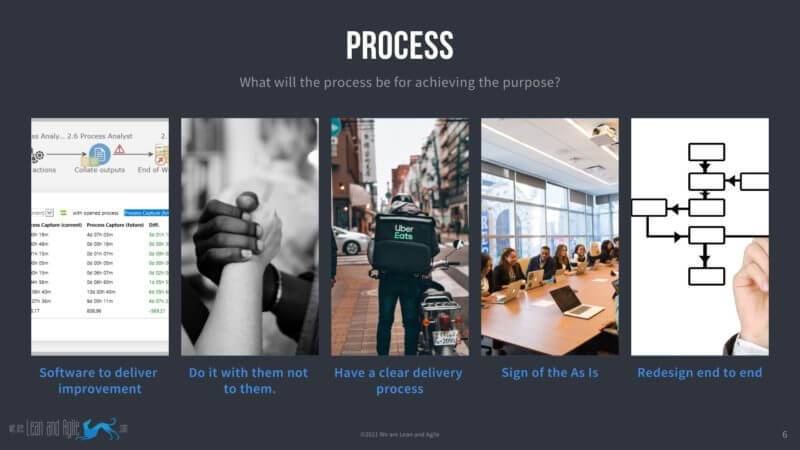
Process – Local Government Improvement
What software does Kay use?
Kay mentions the software that she uses for mapping, analysis and improvement a number of times. She always used to do process mapping workshops the old way, like we all started doing. We have all experienced the mapping workshops with Post-Its and brown paper, the days writing it up to something like Visio and the complex manual calculations to work out costs and benefits. With Engage Process, you build live-in workshops (no more write-ups!) due to software ease of use, but also you can store all your process information on the map itself. You can capture descriptions, value add, problems, ideas, roles, systems, times, costs, and so much more all in one place.
You can then display all this information with the click of a button and analyse the costs and times to deliver the process, and highlight any bottlenecks. The software is a million miles ahead of other mapping tools that effectively just enable you to create a picture of a process.
Do it with them, not to them
This is not about doing digital transformation to services, at least not if you want to deliver success. As Kay highlights, the central team are facilitators that are there to help capture and document the processes, which enable the subject matter experts to discuss the process and how it works. This ownership by the service area of the outcomes is critical to speeding up delivery and implementation. It also reduces your risk of expensive rework due to quality or buy-in issues.
Have a clear delivery process
This isn’t about a process mapping exercise. This is about delivering improvement. To do this well, you need to have a clear process you are following for improvement, delivery, implementation and iteration with clear (and agile) governance around it. Wrexham have a clear process for improvement with milestones, timescales and responsibilities clearly identified.
We always advise our customers to map this process out as one of your first processes. It can be the best way to introduce what you will do to process owners. Explain the improvement project with a process map. Show the benefits with one of the things that their staff will be producing for their processes. Show them the benefits of capturing a process and get them engaged and bought in.
Sign off the As-Is
This is a critical point that I highlight every time I deliver training and coaching sessions with our customers. It is a small but important piece of governance. The process owner should sign off your current process before you move to any form of redesign exercise. To really enable that to happen, the wider group of stakeholders involved in this process must have the chance to review it and add their feedback. You must then make the changes necessary and forward them to the owner for sign off.
What you are achieving by this are many things. You have an agreed baseline of the current process that everyone has had the chance to see and contribute their ideas. This means you can now move forward to start to redesign safe in the knowledge you have a shared understanding of where you are right now. As a result, the quality is high, and the engagement/ownership of the service is also improved. But probably most value is that it reduces the chances of rework or challenges later in the project because the current process is disputed.
Redesign your end to end processes – don’t implement bad processes in good technology
The last two organisations that Kay worked at (Wrexham and Teignbridge Councils) have taken different approaches to this, and both are very common in our experience with customers and other organisations.
The first approach is what I would call “lift and shift” or, if you want something cruder “polishing the turd”. In one project I worked on as a consultant, the project board term became (I don’t know how!). Lift and shift is basically take what we have now and put it into new technology unchanged (or virtually unchanged at least). These projects are often driven by a change of systems and normally an impending deadline it is very understandable but avoidable if you have a continuous improvement culture in the future! This is often also encountered with the phrase “we will come back and improve the processes later”.
The second approach is the end to end redesign and integration of systems. This delivers full improvement work and the integration of systems to deliver some automation and remove waste. This delivers good results but can be very slow to implement, especially if you are integrating the systems for the first time.
At Teignbridge, they applied the second approach. With Wrexham, they applied the first and now effectively Kay is delivering a third approach, a more hybrid version. Credit to Wrexham, they are going back and improving the processes, there is not always the resource to do this.
The third approach I would describe is the analytical approach. Understand the processes and assess the value. High volume and high-value transactions would clearly be appropriate to integrate, but low value and low volume transactions don’t merit the investment. There was a clear driver for user needs and value delivery. For all organisations, it is about using limited resources in the most effective way, and this approach helps you to make better data-based decisions (if you have the right software!).
Do remember these examples look at front and back-office systems, integrations and processes, and there are other technologies that can help solve your problems, but these are great examples of a project or programme that many Local Authorities and other organisations delivering right now. In terms of speed of delivery, I would always advise organisations to have a look at RPA technologies.
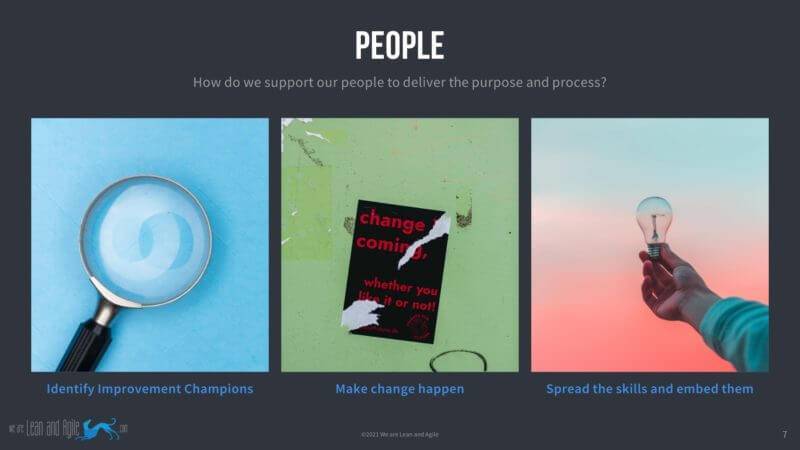
People – Local Government Improvement
Identify Improvement Champions
This is my term, not Kay’s, but this is something I really agree with Kay on and think is critical to the success of implementing a continuous improvement culture. During every workshop, you can easily identify people working in the service who get it. They ask the right questions, and they offer solutions or alternatives to remove the waste. But why is this so important to success?
If you look at an average Local Authority in the UK, they probably have 700 or more processes across many different departments. These processes are changing and iterating all the time, often in an ad hoc and unstructured way. Process improvement should not be a one-off event that happens in a project or programme with the transformation team support. It should be continuous, and it needs to be done by the services.
Make change happen
Again this may sound a little silly, but this isn’t an academic exercise to create a picture of our processes. Improvement workshops are to deliver improvement, not maps. Recently I have been looking at a report on process mapping in healthcare, and the most shocking statistic for me was that only 42% of the projects reported doing anything with the knowledge they gained by delivering or even testing improvement ideas identified.
It depends on how you structure your project/programme and approach, but I am a great fan of taking quick wins and implementing change straight out of the workshop (remember to update your As-Is map though!). There are always changes you could make now, so why not? People gave their time and attended to improve, and what better way to motivate them and build trust than to make changes as a result. Some changes will take time, but for those that don’t, why not get them implemented right now?
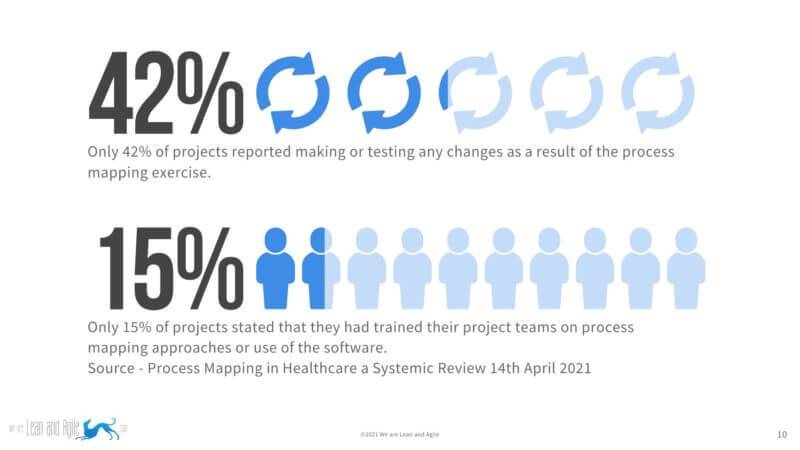 There will never be enough central resources to deliver this, and we see the best results where the skills and the improvement tools are given to the service. These champions you identify can be doing the next iterations of your process. You don’t need to bring in consultants or transformation teams to improve processes for you. The ease of use and functionality of the Engage Process software makes it possible to have a small improvement team who train and support a network of service improvers across the organisation.
You can build your own sustainable network of improvers supported by your central team. What value does that give you? Nobody can afford consultants to do this all for you, and you will get better results with ownership by the services. The benefits of this are huge. The city of Edinburgh Council has done just that to great effect. Have a look at a case study here.
There will never be enough central resources to deliver this, and we see the best results where the skills and the improvement tools are given to the service. These champions you identify can be doing the next iterations of your process. You don’t need to bring in consultants or transformation teams to improve processes for you. The ease of use and functionality of the Engage Process software makes it possible to have a small improvement team who train and support a network of service improvers across the organisation.
You can build your own sustainable network of improvers supported by your central team. What value does that give you? Nobody can afford consultants to do this all for you, and you will get better results with ownership by the services. The benefits of this are huge. The city of Edinburgh Council has done just that to great effect. Have a look at a case study here.
Spread the skills
From our experience, it is quite easy to spread the skills organically as you run workshops. As Kay identified, you become very aware in a workshop who would be a good user of the software. There are always more processes to map than can be accomplished by a central team alone. As these people make themselves known to you, why not give them a bit of training and get them improving processes?
Your early project team users can easily train and support this network with their experience in the initial workshops, but you might want to factor in some training/coaching for them. Very quickly, you have a large network of improvement champions to bang the drum about why to do it and also improve lots of processes.
Top takeaways for Local Government Improvement
Paul asked Kay to provide her top tips for people listening, and these are the ones she identified:
Don’t build old processes into new technology
Review your processes and question everything. Redesign the end to end process, not just a part of the process. Look at the costs and times and understand the benefits you can deliver.
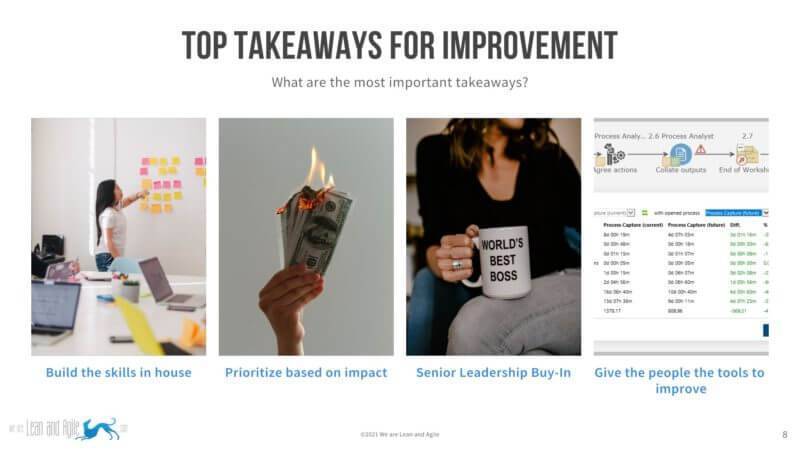
Build the skills in house
Nobody can afford consultants to do everything, and nor should you want to do that for the best results. Build the skills in house for delivery of continuous improvement, user research, agile and other necessary skills for a digital age.
Look at building the skills into Job Descriptions, Induction and eLearning to highlight the continuous improvement and digital culture.
Prioritise the work based on impact
One size does not fit all. You should understand the costs and the potential benefits of change before deciding what you are going to do. You don’t necessarily want to do integration work on processes that are low volumes and low value, but you will want to do it where there is a clear return on investment. Take the few days to really understand your processes and their times/costs and make better decisions on where to invest your limited resources.
Senior Leadership buy-in is critical
Continuous improvement and digital are cultural changes, and with any cultural change, senior leadership buy-in is critical. Where you are trying to change a culture, you cannot do it without leadership and empowerment from the top. There will be difficult decisions to make and issues to resolve, so that vision and strategy from the top give everyone the frame of reference to check their direction against.
Another thing Kay touches on is whether managers need to be in process workshops. There are different schools of thought on this one, but my view is very clear based on our experience. Firstly never map a process with just the managers, they do not know the real process and nor should they. In terms of whether managers should be in process workshops or not, I think they do not need to be; however, they will learn a huge amount about what is going on if they do. I have only ever had an issue once with a manager in the workshop where they were closing down the conversation and wanting to hide the problems. We dealt with it by asking them to leave!
Our top tip to add to those:
Give people the tools to improve processes
We would also highlight the need to equip people with the tools to help them get the job done. Engage Process was heavily referenced in the podcast and offers fantastic functionality to help you improve your processes. It saves huge amounts of time for analysts and helps you identify the costs and times related to your processes automatically.
You can store all your data in one place (on your map) and can share processes digitally and get feedback directly on your maps. When you implement a change, you can also publish your digital process handbook to train and support staff.
If you want to find out more, why not come along to our weekly demo on remote process workshops or just book a slot for a 1-1 online CI discovery session 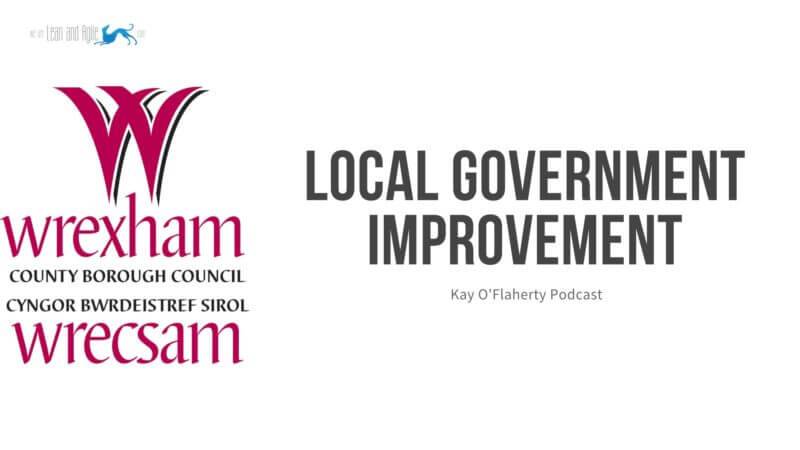
 We have split up the lessons shared by Kay into the 3 main subject areas:
We have split up the lessons shared by Kay into the 3 main subject areas:



 There will never be enough central resources to deliver this, and we see the best results where the skills and the improvement tools are given to the service. These champions you identify can be doing the next iterations of your process. You don’t need to bring in consultants or transformation teams to improve processes for you. The ease of use and functionality of the Engage Process software makes it possible to have a small improvement team who train and support a network of service improvers across the organisation.
You can build your own sustainable network of improvers supported by your central team. What value does that give you? Nobody can afford consultants to do this all for you, and you will get better results with ownership by the services. The benefits of this are huge. The city of Edinburgh Council has done just that to great effect. Have a look at a case study here.
There will never be enough central resources to deliver this, and we see the best results where the skills and the improvement tools are given to the service. These champions you identify can be doing the next iterations of your process. You don’t need to bring in consultants or transformation teams to improve processes for you. The ease of use and functionality of the Engage Process software makes it possible to have a small improvement team who train and support a network of service improvers across the organisation.
You can build your own sustainable network of improvers supported by your central team. What value does that give you? Nobody can afford consultants to do this all for you, and you will get better results with ownership by the services. The benefits of this are huge. The city of Edinburgh Council has done just that to great effect. Have a look at a case study here.

